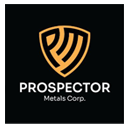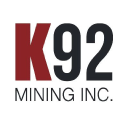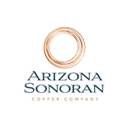AI Infrastructure and Producer Margins Set the Stage for a Transformative Metals Cycle

Record producer cash flows, unprecedented liquidity, AI infrastructure demand, and early M&A activity signal precious metals entering sustained bull cycle favorable for investors.
- Veteran investors at the Precious Metals Summit in Zurich assess the current environment as one of the best setups for commodities in decades, driven by record global liquidity, structural demand from AI infrastructure, and mining companies generating unprecedented cash flows while trading at reasonable valuations.
- The AI infrastructure buildout requires the US to construct at least a trillion-dollar investment cycle for power generation alone that will demand massive quantities of copper, steel, and concrete while requiring government liquidity injections that support gold prices.
- Major gold producers are demonstrating exceptional margin expansion, with AngloGold Ashanti increasing quarterly operating cash flow from $300 million to $1.4 billion while K92 Mining posted six consecutive quarters of free cash flow while funding a complete mill expansion.
- The M&A cycle is accelerating as producers with pristine balance sheets deploy capital through strategic investments and acquisitions, with recent examples including B2 Gold taking a 19.9% stake in Prospector Metals, Probe Gold's acquisition, New Gold's pending takeover, and Gold Fields committing $50 million to junior investments.
- High-quality copper assets in North America are attracting significant capital as Arizona Sonoran Copper raised $75 million and neighbouring Ivanhoe Electric secured $200 million debt financing for the Santa Cruz project, reflecting investor recognition of supply constraints and structural demand growth from energy transition and AI infrastructure requirements.
The precious metals sector is entering a potentially transformative period supported by multiple converging factors. According to veteran investors speaking at the recent Precious Metals Summit in Zurich - including Pierre Lassonde, Frank Giustra, and Marc Faber - the current environment represents one of the best setups for commodities in decades. This assessment is based on observable market conditions rather than speculative optimism: global liquidity at record levels, structural demand drivers emerging from technological infrastructure buildout, and mining companies generating unprecedented cash flows while trading at reasonable valuations.
The combination of these factors suggests the sector has entered what experienced market observers describe as a period of "fast deterioration of purchasing power" in fiat currencies, creating conditions where real assets including precious metals and commodity-related businesses should outperform over the coming decade. This analysis examines the specific drivers supporting this outlook and what it means for investors evaluating the sector.
Global Liquidity Supporting Asset Prices
Despite recent market volatility, global liquidity continues expanding. The People's Bank of China continues injecting liquidity into their system, while the New York Fed has discussed plans to inject substantial liquidity into US markets during Q1 2026. The recent ending of the government shutdown will release capital that had been trapped in the treasury system for over a month. Sam Pelaez explains,
"They have discussed plans to inject substantial liquidity into the markets in the US during Q1 2026. All assisted by the government shutdown ending which naturally will release whatever capital has been trapped in the system, in the treasury over this over these month and a half. So I think there's positive momentum on that global liquidity curve."
These headlines appear designed to shake out loose hands rather than signal fundamental deterioration in market conditions. The underlying trend of increasing global liquidity should continue supporting commodity markets.
The seasonal pattern also supports near-term optimism. Q4 typically represents the most volatile period for markets, but the second half of November through early December historically provides attractive entry points before Q1 strength materializes. With liquidity conditions improving and seasonal patterns turning positive, the technical backdrop for precious metals appears constructive.
The AI Infrastructure Imperative
A less obvious but potentially transformative driver for commodity demand is emerging from artificial intelligence infrastructure development. The scale of this buildout is substantial - a total infrastructure spend approaching $1 trillion for power generation alone. Pelaez add,
"The US needs to build at least 350 gigawatts of power dedicated to AI-affiliated industry. For those who are not familiar, that's 50 nuclear power plants or 300 gas power plants. It's a lot. And that'll come at a cost of somewhere between US$1 to 2 billion per gigawatt. So we're talking about a trillion dollar investment cycle just for the power."
This figure excludes associated costs for electrical grids, transmission infrastructure, and the computing hardware itself. The magnitude of this investment cycle is beginning to come home to roost for the major technology companies. While the so-called "Magnificent Seven" tech companies have largely funded AI development from operating cash flows, other participants like Oracle have turned to debt financing. This creates potential financial system risks if a gap emerges between AI capital expenditure and realized financial benefits.
Recent developments suggest government support will be necessary to complete this infrastructure buildout, similar to how the US government supported highway construction in the 1950s. The announcement two weeks prior of Brookfield and Cameco partnering with the US government on nuclear facility development represents what appears to be the first round of such support.
For commodity investors, this infrastructure cycle represents unambiguously positive news. These are real assets requiring concrete, steel, and particularly copper. More importantly, government participation means continued liquidity injection into the global economy, which should prove supportive for gold prices. The AI infrastructure buildout may ironically serve as the catalyst for the next major bull market in the broader commodity cycle.
Exceptional Producer Economics
The third quarter of 2025 demonstrated the financial leverage inherent in gold mining operations when precious metal prices rise. Companies that effectively translate favuorable price environments into cash generation are delivering results that justify investor attention:
AngloGold Ashanti provides a case study in operational excellence. When Orion Resource Capital first invested in the company, it generated approximately $300 million in quarterly mine operating cash flow. With gold prices roughly doubling since that time, quarterly cash flow has increased to $1.4 billion - more than quadrupling as gold prices doubles. Even accounting for the Centamin acquisition (which contributes approximately 20% of current production), the cash flow expansion significantly exceeds the gold price appreciation.
This represents precisely why investors allocate capital to gold producers: the margin expansion opportunity when metal prices rise. AngloGold Ashanti now operates with zero net debt, has increased its dividend, and possesses strategic flexibility to pursue growth through acquisition, accelerate organic development projects, or return additional capital to shareholders. The company trades at roughly half the valuation multiple of Agnico Eagle Mines despite generating $1.4 billion in quarterly operating cash flow compared to Agnico's $1.8 billion - and Agnico represents one of the best-operated companies in the Western world.
K92 Mining offers a different but equally compelling narrative. Management has maintained conservative guidance while consistently delivering results, posting six consecutive quarters of free cash flow while organically funding construction of a complete new mill, twin declines, and associated infrastructure. This achievement came on what remains a relatively small operation, with the major inflection point arriving in Q4 2025 as the Phase 3 expansion completes commissioning.
Operating costs scale favourably as the market has not yet fully recognised the coming cash flow expansion, creating a valuation gap that should close as actual quarterly results reflect the higher throughput beginning in early 2026. Pelaez states,
"What happens when you've already spent the capex and your throughput is about to go higher effectively with a minor adjustment to the cost base because the mill operators are the same roughly. Whether if it's an 800 tpd or 3,000 tpd mill, you still need one mill manager and superintendent. So I think these numbers that if you look at the balance sheet and the income statement for K92 is a is a perfect example of how to run a company very well."
This pattern of market recognition lagging actual operational progress creates opportunity for investors who understand the timeline and trust management execution.
Capital Deployment and M&A Dynamics
Major producers across the sector reported similar themes during Q3 earnings: dividend increases, share buyback authorisations or increased buyback activity, debt reduction, and continued ability to fund organic growth. This combination of shareholder-friendly actions while maintaining financial flexibility is unusual outside commodity cycles and should attract generalist investor interest.
Few sectors currently offer the profitability levels precious metals producers demonstrate while trading at current valuations. Growth rates of 50-100% in annual profits would typically command 30-40x earnings multiples in other industries. While mining is cyclical and such growth rates are not perpetual, the current disconnect between profitability and valuation multiples creates opportunity.
"As more generalist money gets interested in the space, it sort of voluntarily displaces us. Specialists in the business like us, we would start trimming holdings on some of these larger names and start redeploying into the smaller producers or even the advanced developers where the valuations are more attractive."
This dynamic feeds into increased merger and acquisition activity. Companies with strong balance sheets see compelling opportunities to acquire producers or developers using stock or cash, with transactions immediately accretive to asset value or earnings.
The M&A cycle appears to be in early stages despite significant activity over the past year. Recent examples include Probe Gold's acquisition, New Gold's pending takeover, Gold Fields committing $50 million to a junior investment, and B2Gold increases stake to 19.9% position in Prospector Metals which now has approximately $40 million for exploration programs in 2026. With quality management, significant financial backing, and promising early results, Prospector represents the type of well-funded exploration story that could deliver discoveries in the coming year.
Copper's Strategic Importance
While precious metals dominate the discussion, copper's role in the energy transition and AI infrastructure deserves attention. Arizona Sonoran Copper announced a $75 million financing that could reach $100 million when existing shareholders exercise tag-along rights. While not the full equity requirement for production, this capital takes the company well into the feasibility and final investment decision process, likely covering front-end engineering design work. Similarly, the neighbouring property controlled by Ivanhoe Electric announced a $200 million debt facility for the Santa Cruz Copper Project Development. Both projects are advancing toward construction on this cycle.
High-quality copper assets, particularly in North America with experienced management teams, are attracting capital as investors recognise supply constraints and structural demand growth. These assets may ultimately be developed together, though any combination would need to reflect appropriate value for existing shareholders.
The intersection of AI infrastructure requirements, energy transition, and limited new high-quality copper discoveries creates a compelling backdrop for copper investments alongside precious metals exposure.
Conclusion: Positioning for the Cycle Ahead
The precious metals sector presents a compelling investment opportunity supported by strong macro conditions, structural commodity demand drivers, exceptional producer cash flows, and early-stage M&A activity. Veteran investors with decades of market cycle experience describe the current setup as optimal for commodity investments over the coming decade.
The key takeaway is not that precious metals will advance in a straight line - recent volatility demonstrates otherwise - but that multiple fundamental drivers support sustained outperformance of real assets versus financial assets as fiat currency purchasing power deteriorates. Companies generating record profits while trading at reasonable valuations, combined with well-funded exploration and development pipelines, create opportunity across the market capitalization spectrum. Investors who position portfolios to capture this opportunity while maintaining discipline around valuation and management quality should benefit as the cycle continues to unfold.
The Investment Thesis for Precious Metals
- Macro Tailwinds Support Real Assets: Global liquidity remains at record highs with central banks injecting capital and government infrastructure spending—particularly AI-related power generation requiring trillion-dollar investments—creating sustained support for precious metals and industrial commodities. Current market volatility represents consolidation within an ongoing bull market rather than trend reversal, offering tactical entry opportunities for investors positioning in real assets ahead of continued fiat currency debasement.
- Target Cash Flow Generators Trading at Discounts: Focus on producers demonstrating ability to convert higher metal prices into disproportionate cash flow growth, with pristine balance sheets, declining cost curves, and management teams actively returning capital through dividends and buybacks.
- Capitalize on Funded Growth Stories: Target companies with fully-funded expansion projects approaching completion where valuations have not yet reflected coming production increases, and seek developers with strategic backing from major producers in established mining jurisdictions. The 12-24 month period following exploration sector recapitalization typically produces significant discoveries, making well-funded explorers that conducted systematic geological work during the downturn particularly attractive.
- Build Diversified Exposure Across Market Caps: Construct portfolios with core positions in established producers for stability and income, allocate to mid-tier producers and funded developers for growth during the cycle expansion phase, and take measured positions in well-backed exploration companies for asymmetric returns. Maintain sufficient liquidity to add during Q4 volatility before typical Q1 seasonal strength materializes.
- Manage Execution and Cycle Risks: Monitor for capital misallocation as financing conditions ease, recognizing not all management teams deploy capital effectively and individual company execution risk persists despite favorable sector conditions. Plan to rotate from larger producers into smaller opportunities as generalist investors enter the sector and valuations reflect cycle maturity, while staying alert to macro developments that could disrupt liquidity conditions including central bank policy shifts.
TL;DR
The precious metals sector is experiencing a rare convergence of amenable conditions: record global liquidity with central banks injecting capital into Q1 2026, a trillion-dollar AI infrastructure cycle requiring massive copper and steel demand, and gold producers generating unprecedented cash flows (AngloGold Ashanti's quarterly operating cash flow quadrupled to $1.4 billion while gold prices doubled). Veteran investors including Pierre Lassonde, Frank Giustra, and Marc Faber describe this as one of the best commodity setups in decades, driven by accelerating fiat currency debasement. Major producers with pristine balance sheets are deploying capital through dividends, buybacks, and strategic M&A, while well-funded exploration companies are positioned for significant discoveries in 2026. The sector offers compelling opportunities across market caps: established producers trading at reasonable valuations despite record profitability, funded developers like K92 Mining approaching major cash flow inflections, and explorers backed by major producers. Current Q4 volatility represents tactical entry opportunities before typical Q1 seasonal strength, with multiple fundamental drivers supporting sustained outperformance of real assets versus financial assets over the coming decade.
Frequently Asked Questions (FAQs) AI-Generated
Analyst's Notes




Subscribe to Our Channel
Stay Informed

















